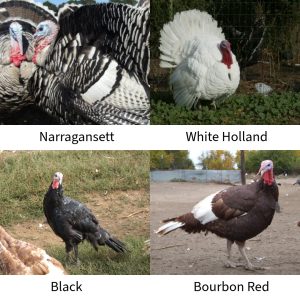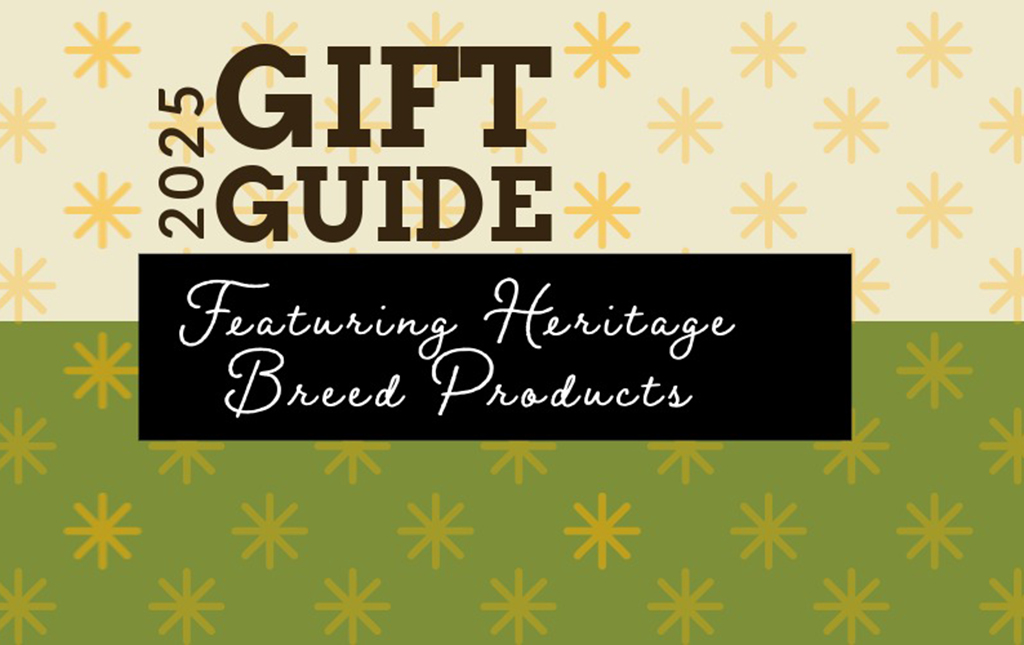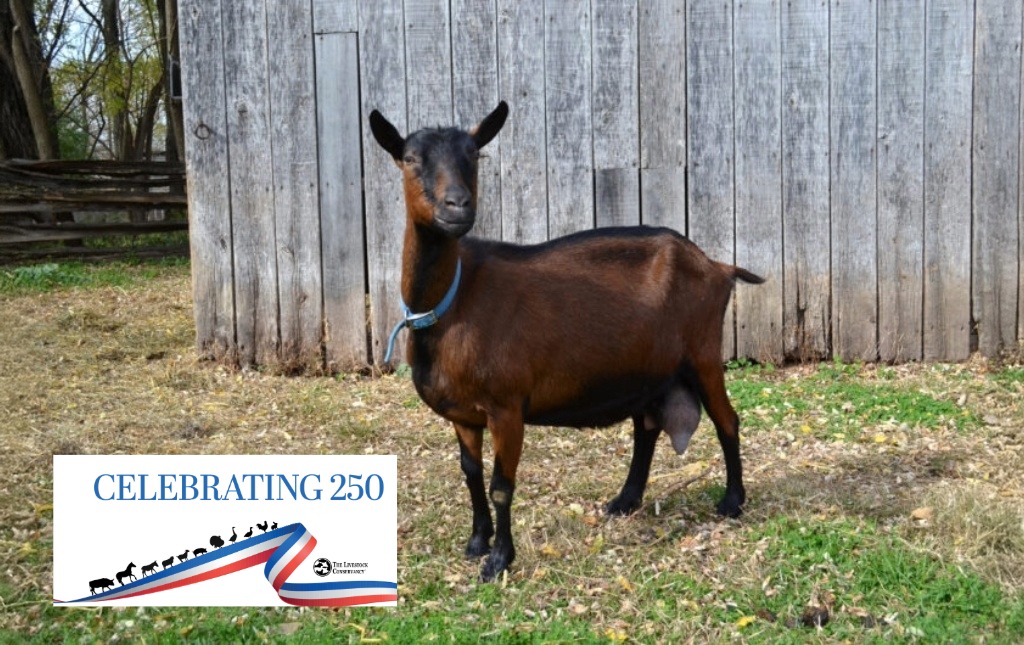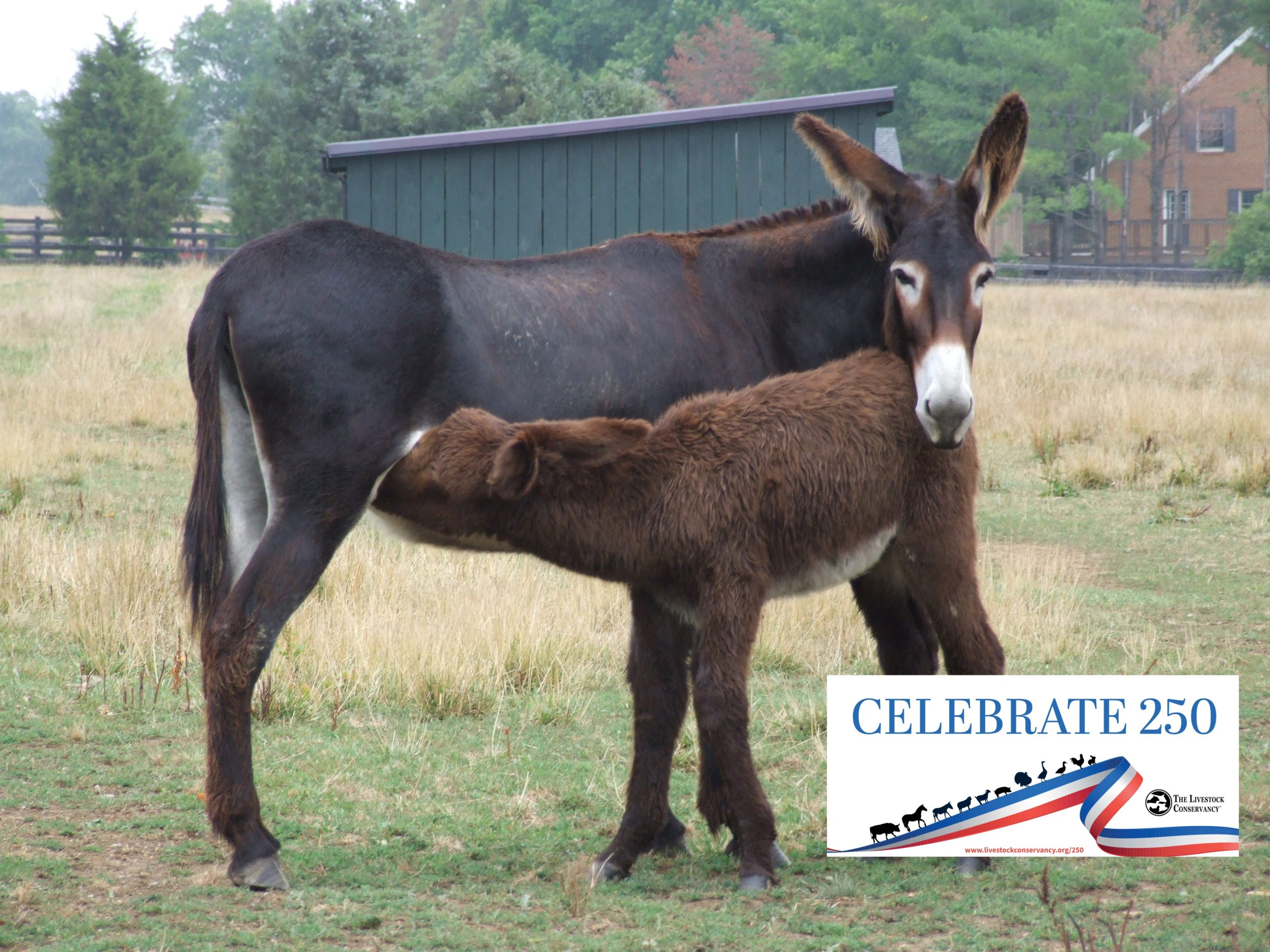by McMurray Hatchery
The history of turkeys has been a cyclical process, involving the spread of domesticated turkeys from this hemisphere to different areas of the world before they eventually made their way back to North America. Here is a summary of how that cycle occurred:
- Native Domestication: The domestication of wild turkeys began over 2,000 years ago among the Indigenous peoples of present-day Mexico and New Mexico.
- Spanish Influence: Spanish explorers brought domesticated turkeys back to Europe after making contact with the Indigenous peoples in 1519.
- European Spread: Upon their arrival in Europe, turkeys became very popular, and several varieties were subsequently developed. The first was the Spanish Black, directly descended from the turkeys transported from North America.
- North American Introduction: While the original native wild turkey remained in North America, domesticated varieties were not introduced here until approximately 1608 with the arrival of English settlers.
- North American Integration: As other European countries sent explorers and settlers to North America, the population of domesticated turkeys grew, and domesticated varieties often were crossed back to native wild turkeys.
Early Importance
When Spanish explorers brought the first domesticated turkeys back to Europe, they quickly became wildly popular. By the 1600s, turkey recipes began to appear in cookbooks across Europe, and the turkey became a Christmas dinner staple in England.
European settlers in North America relied on wild turkeys as a source of meat until their population declined. The introduction of domestic Black Turkeys from Europe allowed colonists to cross these birds with wild turkeys, resulting in the American Black Turkey in the 1600s. This was a pivotal moment, as the American Black Turkey was a larger domesticated meat bird that could be managed on family farms.
Development of Heritage Turkey Varieties
All domesticated Heritage turkey varieties descend from the wild turkey (Meleagris gallopavo), which is native to North America. Over decades, regional varieties of turkeys were developed here based on desired qualities such as size, color and hardiness. This resulted in the development of several modern turkey varieties and led to the differentiation between Heritage and production varieties, as well.
Here are some examples of the turkey varieties that were developed in North America:
- Narragansett: The Narragansett was developed in New England in the 1600s by crossing native wild turkeys with domesticated lines introduced by early European settlers. This breed is valued for its calm disposition and delicious meat, and was prized on farms throughout America during the 19th century.
- Broad Breasted Bronze: The Broad Breasted Bronze, a production variety, was created by intentionally crossing domesticated turkeys with wild turkeys, and was further developed through selective breeding that began in the 1700s. This turkey variety is widely recognized for its excellent feed conversion ratio and generous amounts of breast meat.
- Black: This variety was directly descended from domesticated imported European black turkeys, but was improved and standardized in America during the 1800s. Settlers raised Black turkeys as a sustainable family table bird, notable for their improved size and hardiness.
- Bourbon Red: This Heritage variety was developed in Kentucky starting in the late 1800s by crossing several existing domesticated varieties. They are known for their gorgeous feathering, delicious meat, and extreme hardiness.
- White Holland: Contrary to what the name may suggest, the Heritage White Holland was developed in America during the 1800s due to demand for white plumage. This variety served as the foundation for the development of the production Broad Breasted White during the 20th century.
Population Decline
Following World War II, a significant cultural shift took place in America’s food system. Rather than turning to backyard gardens and farms for food, people began looking to larger producers and suppliers. Turkeys were no exception; meat production became concentrated among larger commercial producers, pushing smaller family farms out of the market. As a result, Heritage turkey populations across North America significantly declined.
Additionally, commercial poultry processors sought out birds with white feathers for ease of processing and cleaner appearing carcasses. This led to the creation of the Broad Breasted White, which took over the commercial turkey market by the 1960s. The Broad Breasted White was selectively bred for increased breast meat, which ultimately resulted in this variety’s inability to mate naturally and produce fertile eggs without human intervention. Artificial insemination became a necessary practice for commercial breeders.
Eventually, raising Heritage turkeys fell out of favor, and many varieties were near the brink of extinction by 1997, when The Livestock Conservancy conducted its first census.
Heritage Turkeys Today
Unlike commercial production varieties, Heritage turkeys can reproduce naturally and raise their young. They are hardy in various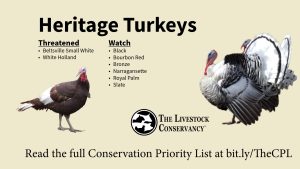 weather conditions across the country. As omnivores, Heritage turkeys forage extremely well, managing both weed and pest populations. These distinct qualities are of particular importance to small breeders and farmers managing their flocks in a free-range or pasture-based system.
weather conditions across the country. As omnivores, Heritage turkeys forage extremely well, managing both weed and pest populations. These distinct qualities are of particular importance to small breeders and farmers managing their flocks in a free-range or pasture-based system.
In addition to the crucial roles that Heritage turkeys play on many farms across America, they also hold the key to the endurance and resilience of turkeys as a whole. Therefore, it is vital that we, as a society, maintain a robust and diverse Heritage turkey gene pool for the survival of domestic turkeys. If there is ever a future collapse in the commercial industry, production turkeys cannot reproduce on their own.
_______________
The Livestock Conservancy has played a vital role in supporting endangered Heritage turkey populations across America by raising awareness of these important breeds through the Conservation Priority List and developing grant-supported educational programs to encourage breeders. The Livestock Conservancy thanks Murray McMurray Hatchery for their support, funding, and involvement in both the Poultry Census and the newest publication of How to Raise Heritage Turkeys on Pasture.
How You Can Help
If you’re considering turkey ownership, learn more about heritage breeds on The Livestock Conservancy’s Conservation Priority List: https://livestockconservancy.org/heritage-breeds/conservation-priority-list/.
Ready to buy or connect with a breeder? Check our online Breeders and Products Directory: https://livestockconservancy.org/heritage-breeds/breeders-directory/.
Support the ongoing work of The Livestock Conservancy by becoming a member or donating: https://livestockconservancy.org/
Raising awareness is key to saving heritage breeds! Follow us on Facebook or Instagram page and share our posts: https://www.facebook.com/livestockconservancy
Join Us Next Month
In December, we will delve into the history of endangered heritage geese in our Celebrating 250 series. You can catch up on past blogs here: https://livestockconservancy.org/250.


